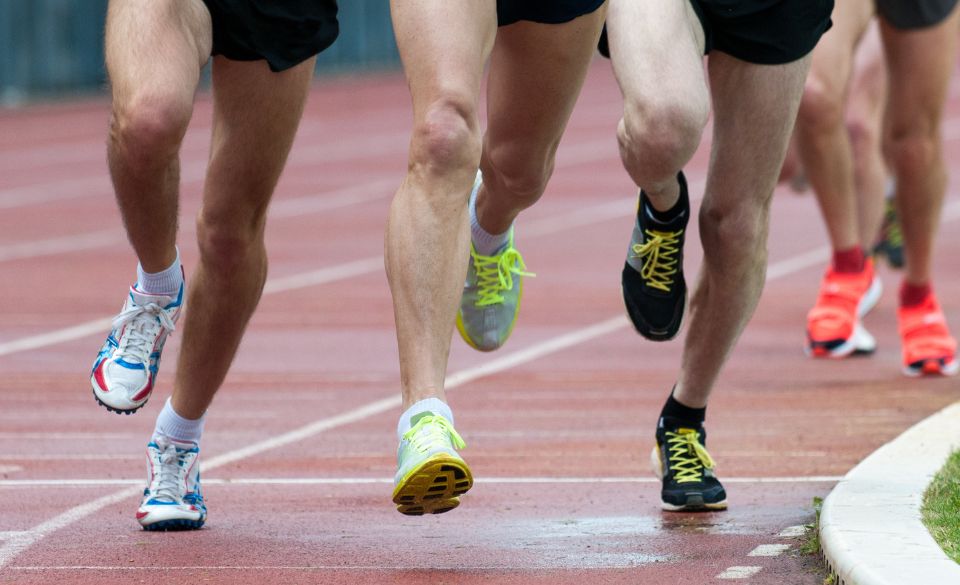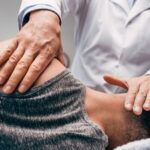
Does Running Build Muscle In Legs – A Complete Guide
Page Contents
Even though most people associate muscle growth and muscle building with lifting weights, it is still possible to build muscle in the legs from running. However, there are a few things you need to take into account.
The training plan you follow and the nutrition you put into the body are some of the main factors in muscle growth, especially with running and other endurance sports.
For some people, this is positive news, especially if you are not a fan of lifting weights or following a strength training plan.
In this article, we provide all you need to know about running and muscle growth and answer whether or not does running build muscle in the legs.
Here’s what you need to know about how to build muscle while running and become a stronger and fitter runner along the way.
How Is Muscle Built From Running?
Just like strength training, building muscle through running comes down to three main factors. These include:
– Stress on the muscles
– Recovery
– Adaption
To build muscle, you need to stress the muscles and body to break down tissues in your muscles. Once you allow adequate recovery, the body will start to build the muscles back stronger than before.
Recovery is an important part of building muscle. Time spent allowing the body to recover will help them rebuild and get stronger.
Recovery can mean either resting from training or doing light low impact aerobic training. Because of this, it is important to include at least one rest day per week and another day of low-impact exercise if running five or more days a week.
If you are a runner that runs only three days per week, the time between each run (if spread out) will allow adequate recovery, and you may not need an alternative low-impact training day.
However, our muscles and body are great at adapting to stress. So, to continue to see muscle growth through running, you can’t follow the same regimen day after day. If you do, muscle growth will plateau, and you may see the results you are after.
Does Running Build Muscles?
Running is a great way to get your heart rate up and improve your overall fitness, but does it actually build leg muscles? The answer may surprise you.
While running can help you tone your muscles and improve your overall fitness level, it is not the most effective exercise for building muscle mass. If your goal is to build muscle mass in the legs you will need to focus on strength-training exercises that target these specific muscle groups.
However, regular running will build muscle in the legs, especially in the:
– Glutes
– Quadriceps
– Hip flexors
– Hamstrings
– Calf muscles
That being said, running can still be a helpful part of your overall muscle-building routine. It can help you burn calories and fat, which makes it easier to build lean muscle mass. And, if you run regularly, you’ll likely see an improvement in your endurance and stamina over time.
So, if you’re looking to build muscle mass in the legs, don’t forget to include strength-training exercises in your workout routine. And, if you want to improve your overall fitness level, consider adding some running to your regimen as well.
Alternatively, if you are looking to build lean muscle mass and improve the definition of the legs, running can help you develop more lean muscle in the legs.
How To Build Muscles Through Running?
Because running is a repetitive exercise it will limit the potential for muscle growth if you don’t add variation into your training plan.
To do this, you will need to change your training plan. Otherwise, consistently running at the same speed or heart rate will end up making you lose muscle mass.
To build muscles in the legs through running, it is important to incorporate different types of runs into your weekly training. These include intervals, tempo runs, hill repeats, high resistance runs, and distance runs.
Here are some basic examples.
High resistance training
Adding resistance to your run can be done in different ways. One is to run up an incline with a weighted object (ankle weights, for example) for 15 to 20 seconds, followed by 60-90 seconds of active rest.
Sprint intervals
Sprint intervals help explosive power, similar to strength training, and help build more leg muscle mass through running.
An example of a sprint workout is sprinting for 15 to 30 seconds and then rest for 60 to 90 seconds. Just make sure you warm up correctly before your intervals.
Distance Runs
Distance runs (or long runs) help build lean muscle mass in the legs and also help you build slow-twitch muscle fibers. So, make sure you include a long run once per week of 1 to 2 hours. If you are a beginner or inexperienced runner, your run may be less than 1 hour, but it should still be your longest run of the week.
Recovery Runs
Easy runs help promote recovery, which is important when trying to build muscle in the legs through running. Keep your recovery runs short and at a low intensity. Doing so will help your muscles repair themselves.
While each person’s running schedule may differ, the key to muscle growth is mixing up the types of runs you do and pairing it with adequate recovery between sessions.
If your goal is to build muscle mass, you may want to consider introducing some weight training into your training plan, as this will help further increase muscle mass.
Nutrition For Building Muscle
Even though the types of runs you do and your recovery is one of the most important aspects when it comes to building muscle through running, nutrition also plays an important role.
Following the correct nutrition strategy in your diet can help you get the most out of your workouts and promote faster recovery, which can speed up muscle growth.
Since running burns a lot of calories, it is important to eat adequate amounts of nutritious foods to fuel your body and build muscle. Foods like brown rice and sweet potatoes a few hours before your run will help restore glycogen levels and give you enough energy to complete your planned workout.
Foods like fish, eggs, and tofu can help speed up recovery after a run. They can also aid muscle growth as these foods carry high amounts of protein. So focus on carbohydrates after your run, paired with high protein foods for optimal post-run nutrition and muscle growth.



